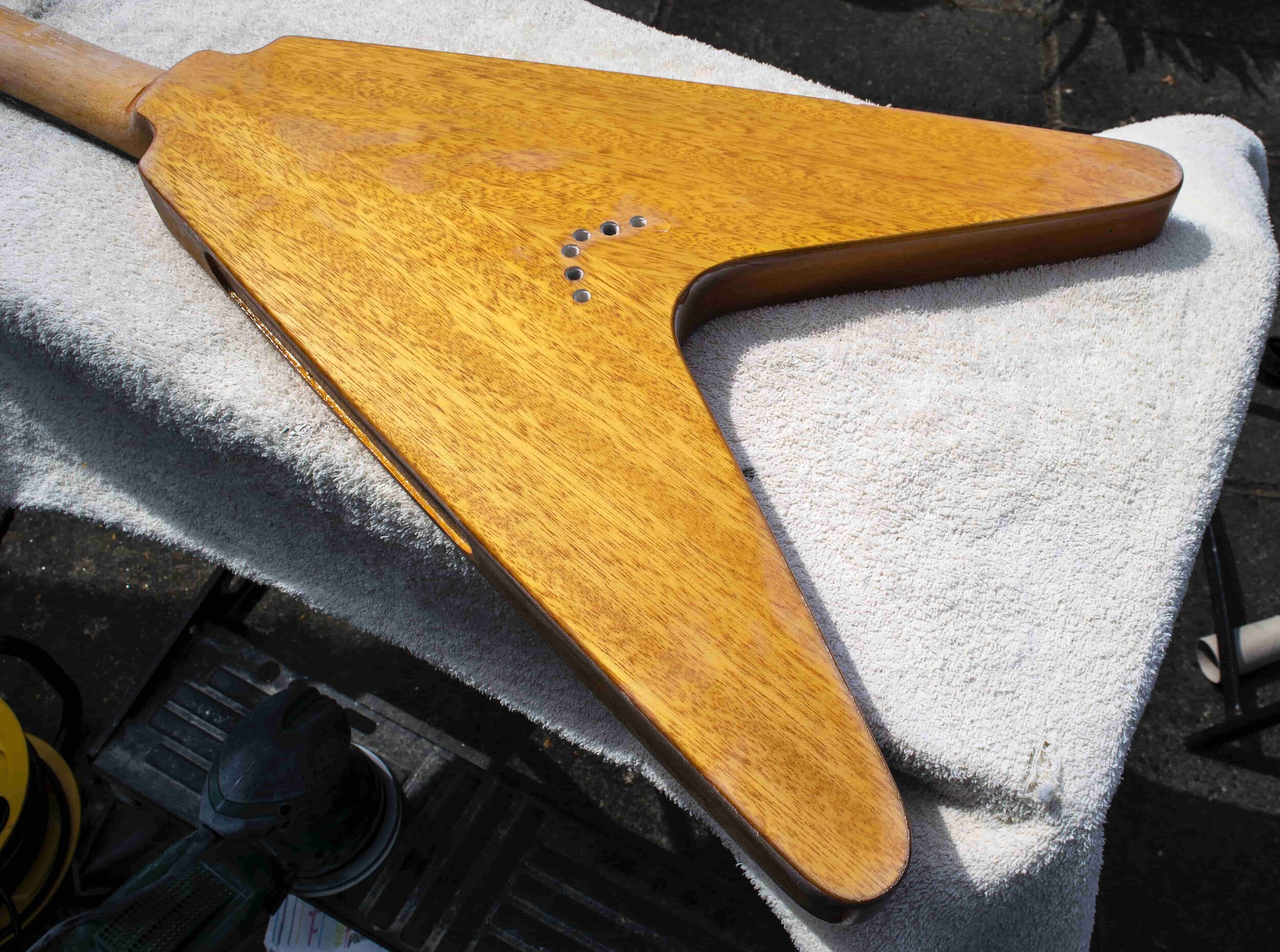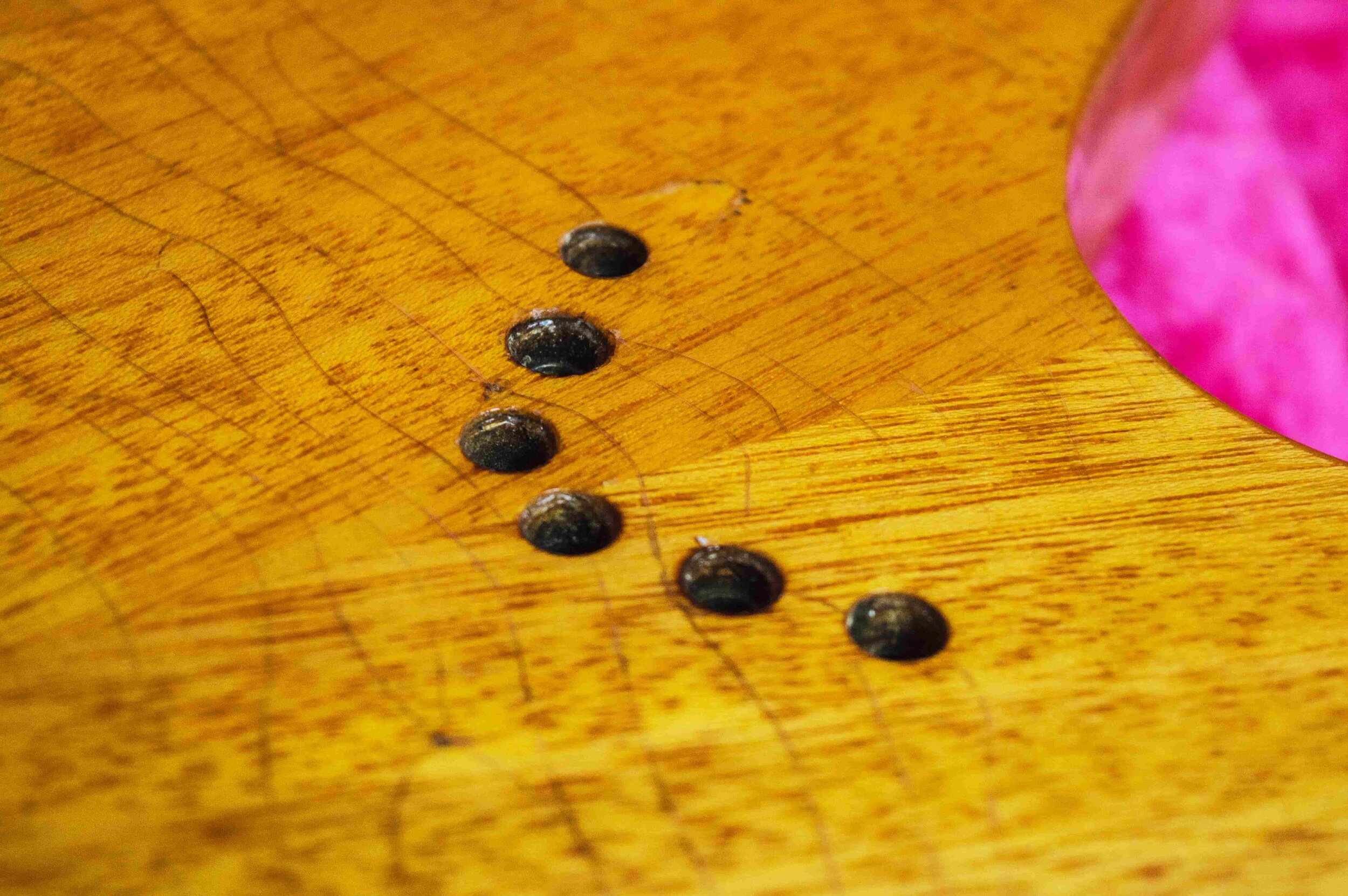
Epiphone Korina Flying V
Far rarer than Les Paul Standards of the same year, few people have even seen a 1958 Gibson Flying V in the flesh, let alone played one.
I took an Epiphone Joe Bonamassa signature ‘Amos’ model to see how close I could get to the Holy Grail.

Scraping the finish reveals the two layers and produces good results, but it’s too time consuming.

The heat gun removed the glossy toffee coloured top coats and leaves the yellowish base coat intact.

The base coat on the left is closer to the colour I associate with 50s Flying Vs.

The ferrule hole at the top ‘blew out’ all too easily, but all the other ferrules came out cleanly.

The back is stripped, sanded and wiped with white spirit to approximate the eventual colour after spraying.

Cellulose sanding sealer is sprayed and sanded flat to confirm that it will fill the pits and adhere to the base coat.

The scorch marks have been sanded off the wood and a rasp is being used to strip the finish from the damaged side.

Eventually I'm back to bare wood and it’s sanded and ready for staining.

Mixing amber stain with a hint of medium brown results in a decent colour match and I might just about get away with it.

The plugs are levelled and will be stained, but both should end up hidden once the guitar is completed.

With the frets removed and celluloid dots installed, the board is sanded to reveal the attractive colour and grain pattern of pau ferro.

The fret ends will need to be dressed before spraying, but I'm hopeful the neck will feel nicer to play.

Available in store and online from The Range, this swivel bladed craft knife makes cutting curved checking lines a lot easier.

The trussrod adjustment slot has been elongated and it has extra thickness in the area adjacent to the nut to accommodate the cover screw.

Small patches of masking tape are placed onto the headstock to mark the screw positions for the trussrod cover.

The bridge is a gold plated Gibson Pat. No with nylon saddles.

The pickups used here are a pair of late 1960s Gibson Pat. No. humbuckers that were a lucky find on Reverb.

The plastic and gold plated parts are Epiphone items, but the V plate is custom made from solid brass.

After a rub down with a Brasso pad, a dip in PCB etchant and a rinse in water, the metal parts are set aside to dry.

Matches are placed between the screws, a paint stripper gun softens the plastic and the screws are torqued down to simulate pickguard warping.

This guitar is being fitted with three 500K pots from 1964 and an old Bumblebee tone capacitor, and here I'm about half way through the job.

The headstock gets a repro trussrod cover and some relicing in the shape of checking lines and edge chips.

The checking lines are less apparent on the rear of the headstock, but the vintage Klusons work smoothly and really look the part.

Although 50s Vs had the earlier style knobs, the mid 60s Vs had reflector knobs like this trio of originals.

The plastics have been dulled with micromesh, warped and stained along the edges.

The Epiphone ferrules sat proud of the surface but on 50s V’s they were deep inside the holes so I shortened them for a vintage look.

I continue the front and back checking lines over the edges and join them together on the sides.
The finished guitar!
It’s taken a lot of work, but I’m pretty thrilled with the way this project has turned out.


